Wednesday, the boring ol' hump of the week. What better way to pull through than with some distractions? Here's our latest batch of neat-o internet distract-o thingers: Sylvan Lake Robotics Club Looking for Members If you're around the Sylvan Lake area and what to dip your toes into the big ol' pond that is robotics, […]
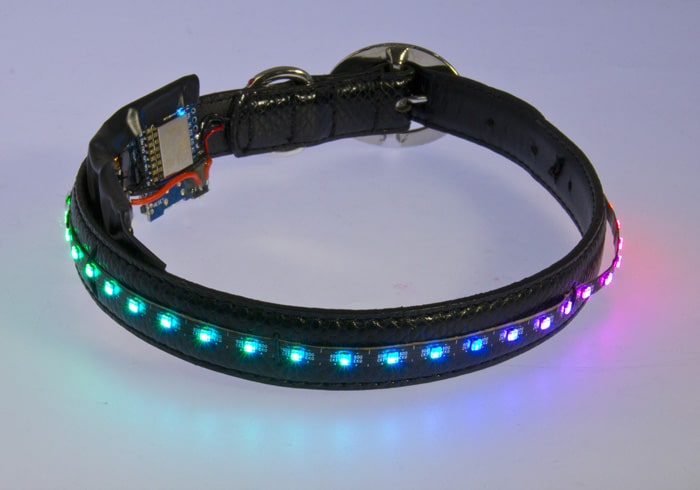
APA102-2020 MicroNova Custom LED Choker
I created this choker as a project to demonstrate the new MicroNova APA102-2020 LED strips.

Photo by Yeti, edited by Batgirl
These addressable LEDs are extremely small, less than 1/4 the size of a standard 5050 LED.
This project was built using engineering sample standard MicroNova 99 LED / meter strips . The MicroNova strips we are selling have 198/meter - twice the density!
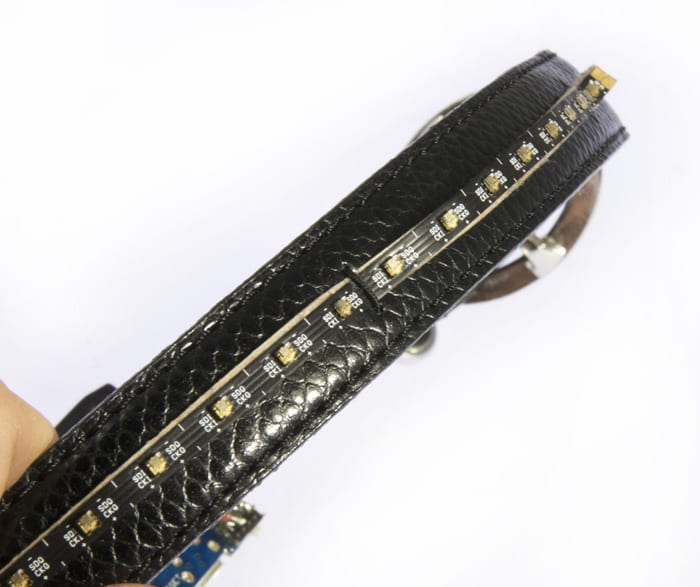
Reason for a Choker necklace:
Hats have been done, shoes have been done, pendants have been done. This is something new for a Valentine’s dance costume, so I decided to go with a choker design. I also wanted something that was interactive, something that would add another layer of WOW to just lighting.
The Build:
I used a Wemos D1 Mini development board along with a boost-converting battery shield for the Wemos D1.

The battery shield was a particularly good choice here because the MicroNova LEDs should be supplied a solid 5VDC. This board boosts the battery voltage to 5V, and then the Wemos D1 Mini bucks it down to 3V3 for it's own operation.
A mini SPDT Slide switch toggles the power from the battery shield to the D1. This allows charging the battery using the battery shield USB connector while not powering the D1.
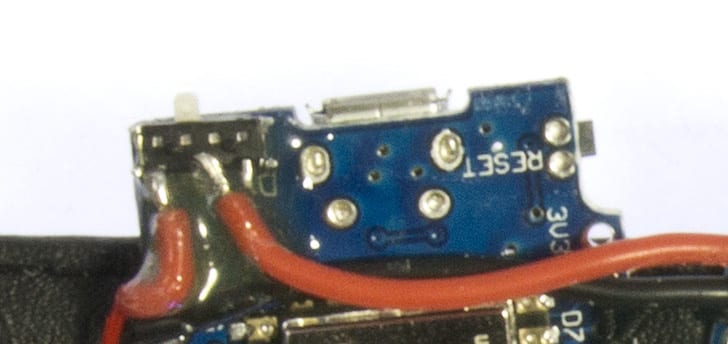
Epoxy locks the switch and wires in place.
The battery used is a conveniently handy older 450mAh Lithium Polymer. Depending on the lighting mode, this battery can power the necklace for a couple of hours.
I used elastic thread to attach the LED strip and components to the necklace. A heavy duty needle was all that was needed to punch through the (imitation) leather belt. Because the thread was elastic and tied under tension, it held the MicroNova strip well in place.
Operation:

When the choker powers up, it creates a WiFi Access Point called "HeartBurnChoker1".
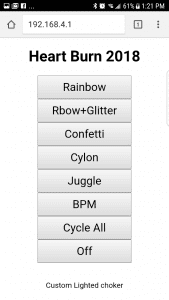
Once I connected to this WiFi, I opened a browser and went to 192.168.4.1. The control interface is simple, but effective. The D1 Mini has more than ample power and speed to effectively drive these LEDs. The MicroNova features separate clock & data lines, so even relatively slow I/O (like Raspberry Pi) can still make it work.
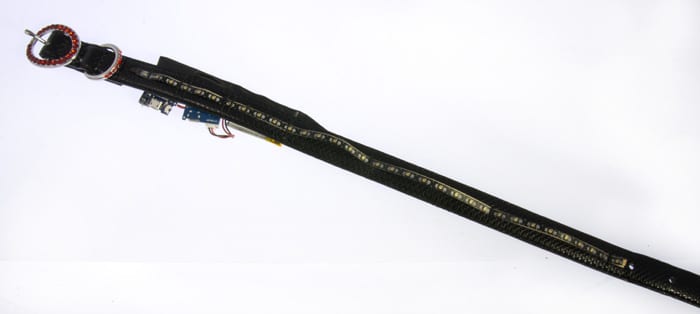
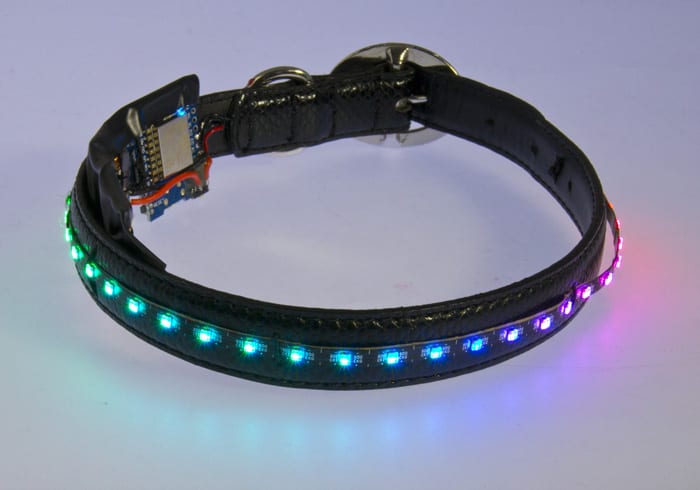
Video of the Collar in Action
MORE POSTS
Well, 50 years ago today, the Regency TR-1 transistor radio was unleashed on the masses. As the first transistor-based radio on the market, it made a splash. And here we are, 50 years later, making robots out of the same technology. Regenchy TR-1, Solarbotics salutes you!
We've got in an inventory of Grand Wing Servo S03N standard servos. These pack quite a bit of power, and prove to be pretty good for standard servo applications. We're sorry to say that the RM1 is no-more. The RM1 is dead; long live the RM1. (I never understood that phrase...) All hail the RM1a! […]
Wondering what Mark Tilden and his crew at Wow-Wee have been up to lately? Thanks to Engadget and the BEAM-mailing list, we can see what they've released at the latest "Consumer Electronics Show" (CES), here on this page and this page. Love the Elvis head... just gotta drop that chip into the monkey head they […]
Solarbotics, Ltd. is not responsible for misprints or errors on product prices or information. For more information, please see our Terms and Conditions.
Warning: This product contains chemicals known to the State of California to cause cancer and birth defects or other reproductive harm.
Please visit www.P65Warnings.ca.gov for more information. This item was manufactured prior to August 31, 2018.

